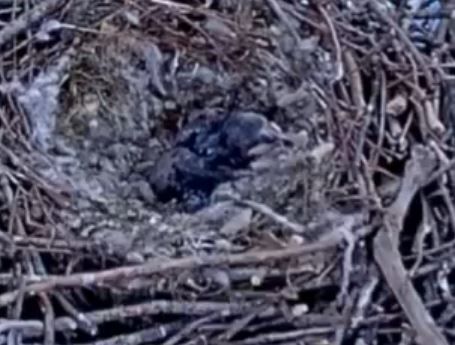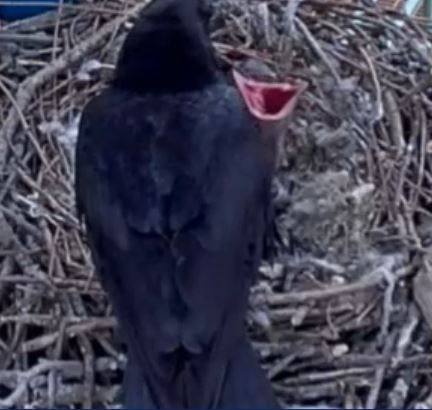

Two common ravens are living at Wellesley’s Science Center.
In the Northeast, ravens have been birds of the remote wilds until fairly recently; they have been increasing in abundance in this area since the mid 1970s. No one knows why, says Frost Professor of Environmental Science and Professor of Biological Sciences Nicholas Rodenhouse. "Ours is the first opportunity to closely observe this most creative of birds in close contact with people," he says. "Much can potentially be learned about parental behavior, vocalizations, diet, and more."
Why Wellesley?
The ravens chose Wellesley College most likely for its cliff-like buildings in a productive landscape. (And, of course, ravens are among the smartest of birds.) The Science Center, surrounded by shrubs and trees, sits alongside an open, sometimes damp meadow. From where "Pauline" and "Henry" made their nest high in a partially glass-enclosed fire escape on the sunny side of the building, their view includes Galen Stone Tower, Houghton Chapel, more trees and open spaces, and Lake Waban.
These large black birds may seem formidable but present no threat to people.
The Science
Through the network camera, Wellesley is recording the birds' behavior at the nest 24 hours per day for scientific purposes. Due to the ravens having chosen a nesting spot near existing lighting, the nest is visible to the camera even at night. Not much is known about ravens in urban environments, and no one has ever before had the opportunity to observe urban ravens at the nest closely. Student researchers will help analyze and interpret the data, with Rodenhouse as their advisor.
READ MORE
Please note: Visitors are welcome at the Science Center during normal business hours (M-F, 8:30 - 4:30) and must be escorted at all times by a member of the campus community. There is no access to the ravens' nest for photography from inside the Science Center.